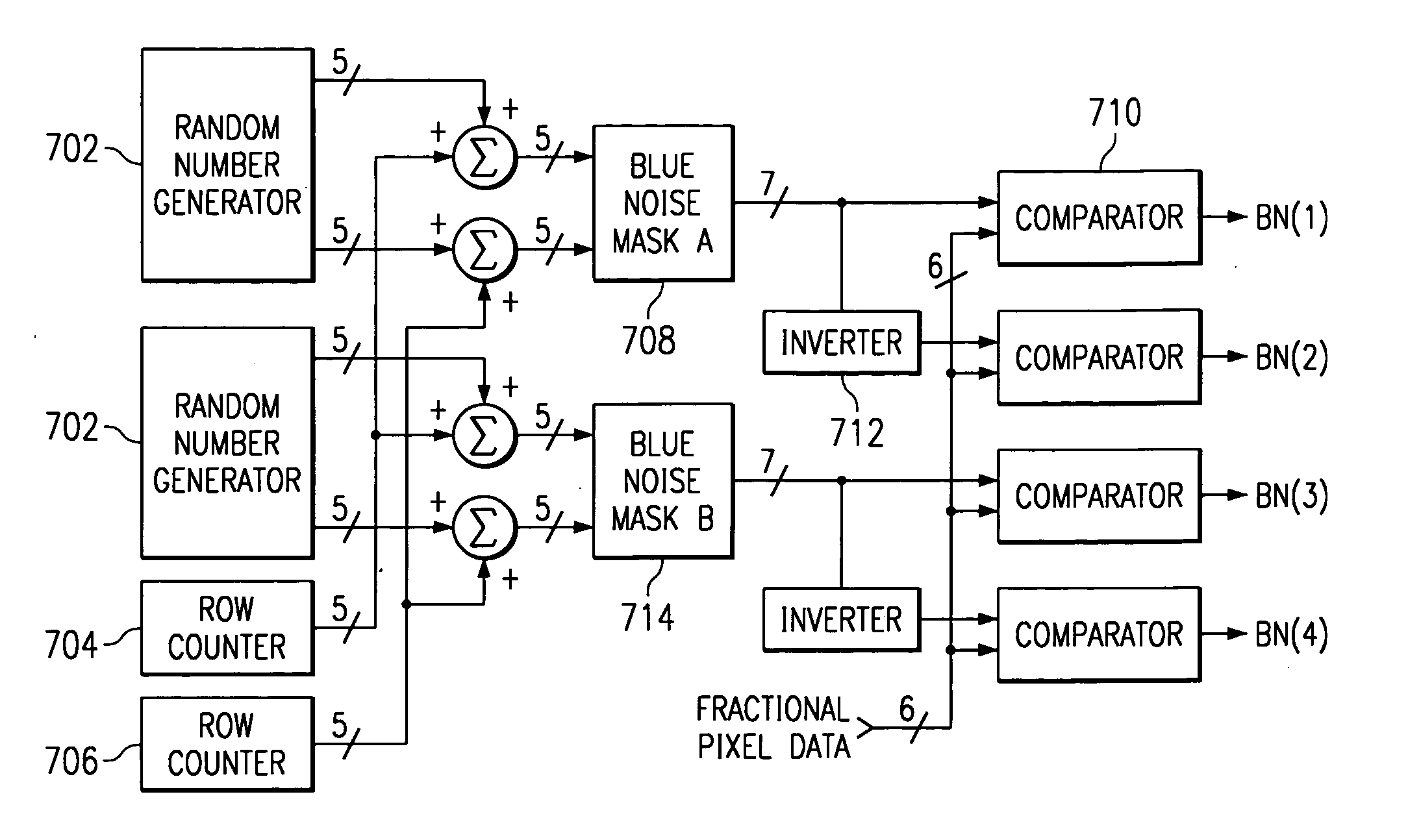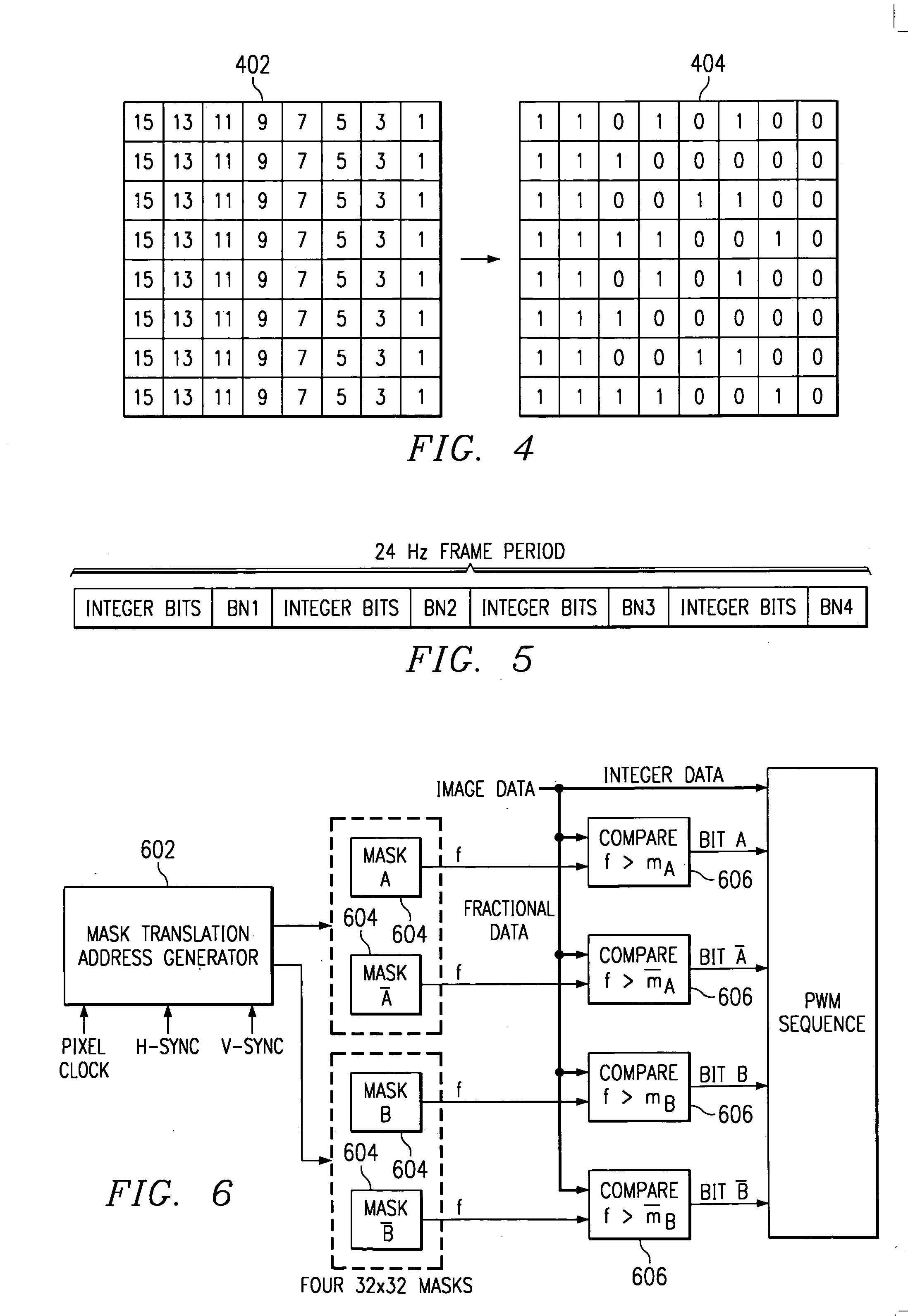Parallel dithering contour mitigation
a contour mitigation and parallel technology, applied in the field of digital display systems, can solve the problems of difficult to create very small intensity resolution steps, objectionable in a dim region of images, and the inability to arbitrarily small the size of lsb intensity steps
- Summary
- Abstract
- Description
- Claims
- Application Information
AI Technical Summary
Benefits of technology
Problems solved by technology
Method used
Image
Examples
Embodiment Construction
[0027] A new pulse width modulation display method has been developed that greatly reduces the PWM quantization and temporal contouring errors associated with prior PWM display systems while avoiding the extremely small bit periods that are difficult to reproduce with a micromechanical spatial light modulator such as the digital micromirror device. The new method very fine control of fractional display bits-virtually eliminating noticeable quantization contouring—without requiring very short bit display durations. The new method relies on a large multi-level mask to reduce the effective duty cycle of the fractional bits. Preferably the multi-level mask does not have a low-frequency component—clusters of ones or zeros—so that the eye is unable to detect the mask. The mask is altered, by changing the mask values and / or moving the mask relative to the image, at a rate high enough to avoid detection of the mask.
[0028] As discussed above, typical PWM display systems individually control...
PUM
 Login to View More
Login to View More Abstract
Description
Claims
Application Information
 Login to View More
Login to View More - R&D
- Intellectual Property
- Life Sciences
- Materials
- Tech Scout
- Unparalleled Data Quality
- Higher Quality Content
- 60% Fewer Hallucinations
Browse by: Latest US Patents, China's latest patents, Technical Efficacy Thesaurus, Application Domain, Technology Topic, Popular Technical Reports.
© 2025 PatSnap. All rights reserved.Legal|Privacy policy|Modern Slavery Act Transparency Statement|Sitemap|About US| Contact US: help@patsnap.com



